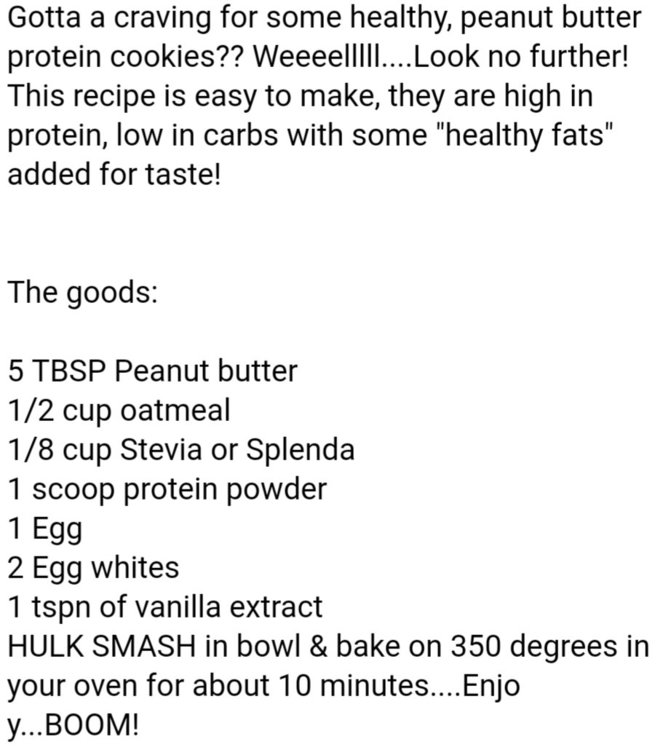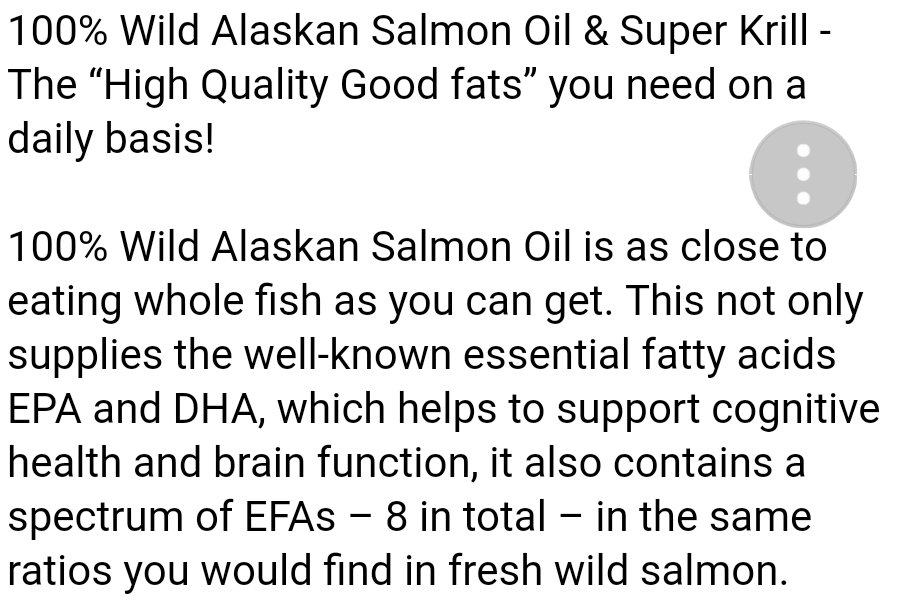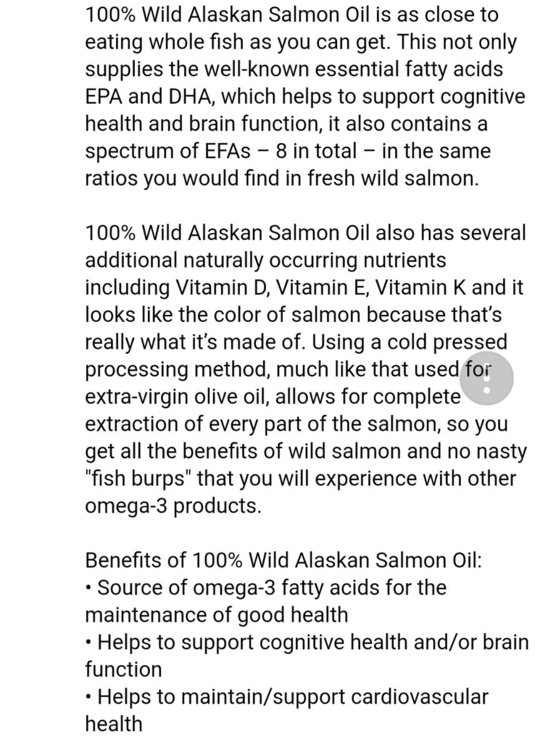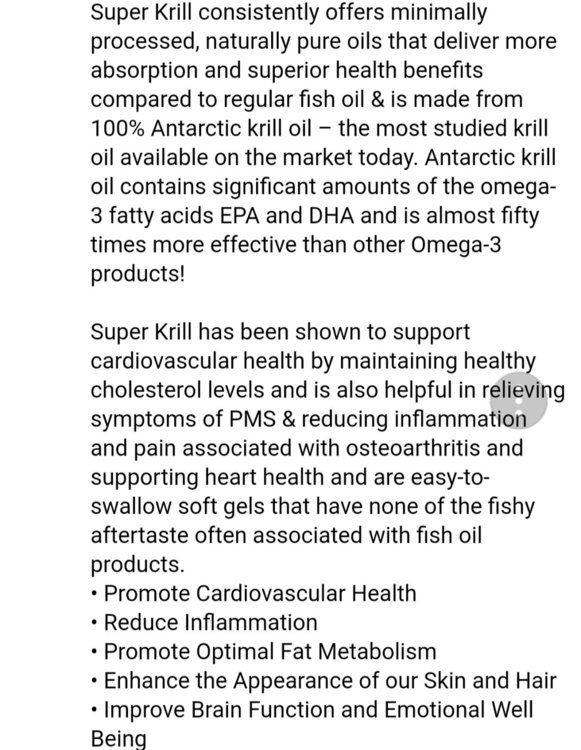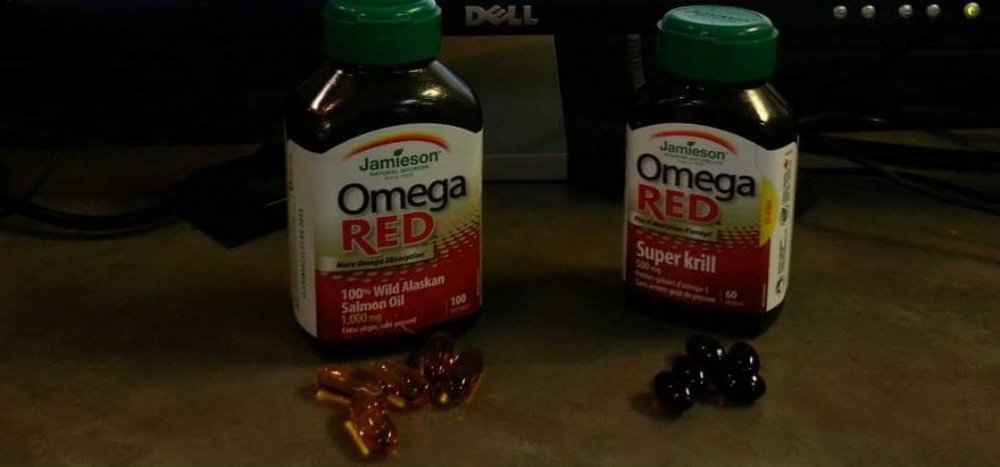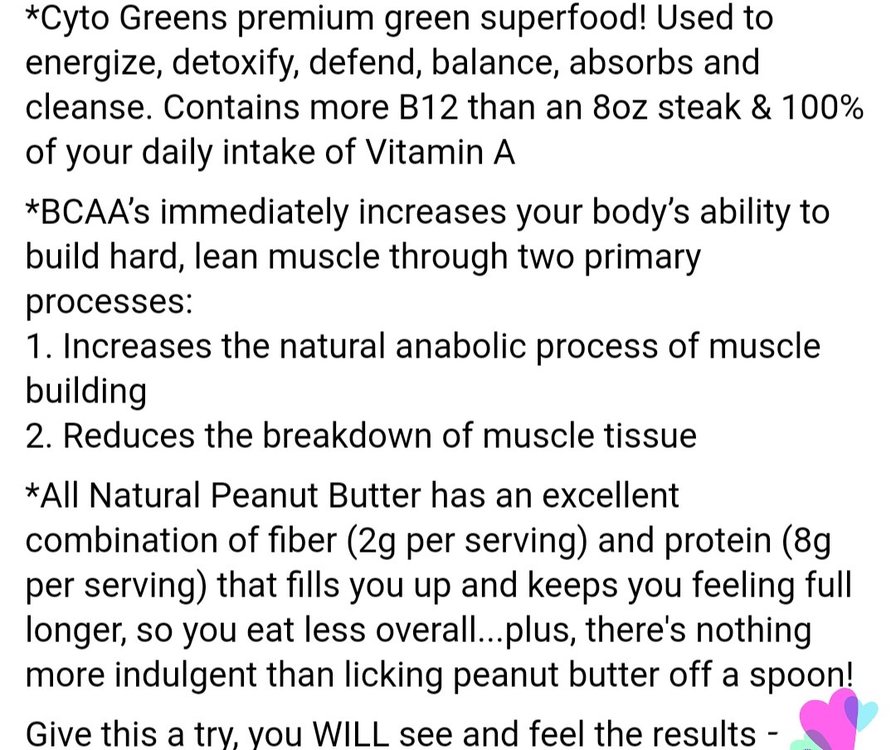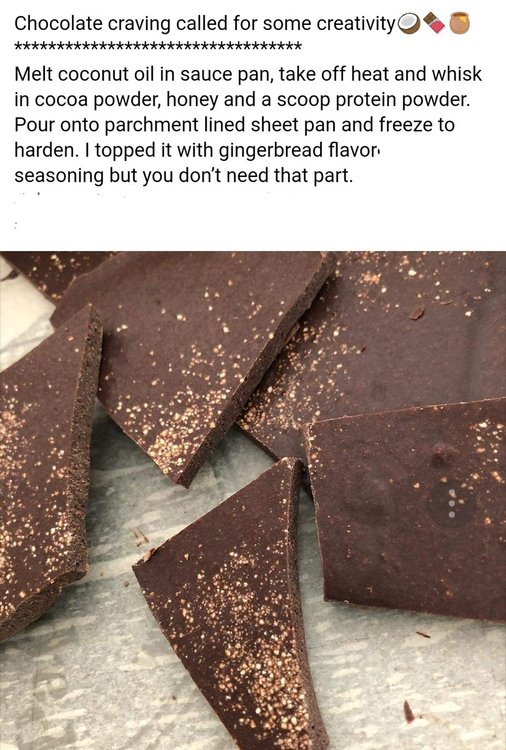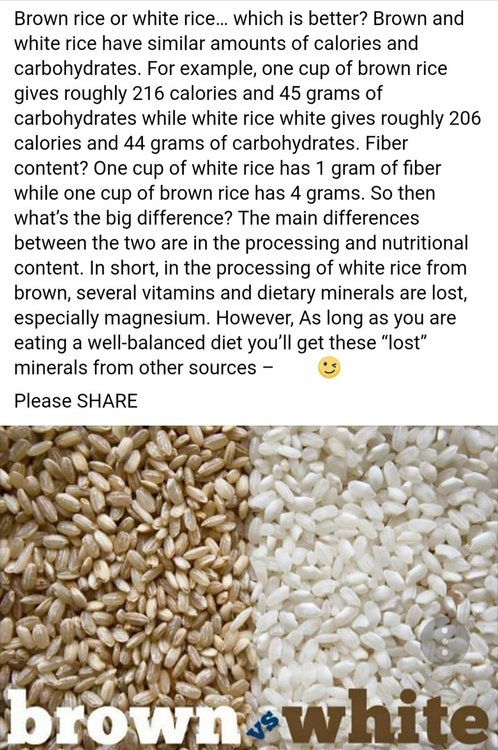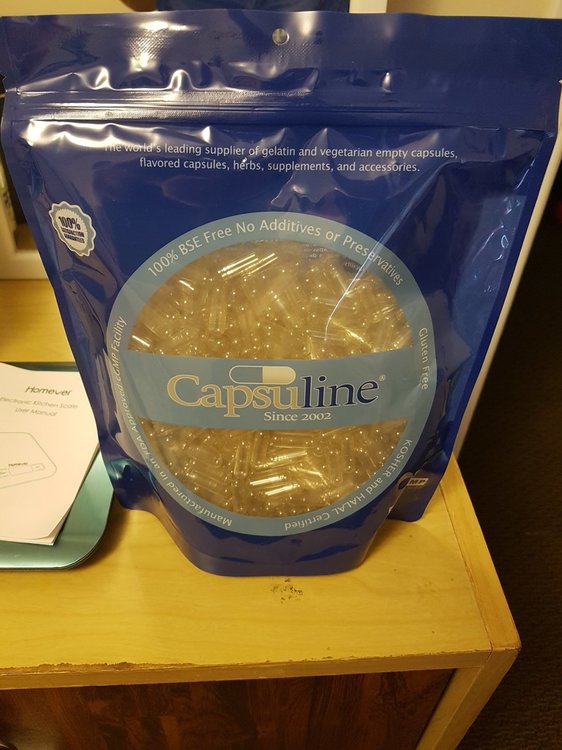-
Posts
912 -
Joined
-
Last visited
-
Days Won
71
Everything posted by musclebeauty
-
-
Welcome Avec nice to have you aboard
-
Welcome aboard guner good to have you here...
-
Welcome aboard powerup good to have you
-
- 1 reply
-
- 2
-

-

-
So I learned my lesson well not to chase down dnp with liquid and I actually bought some capsules and started actually packing 200mg in the capsules worked like a charm. So I am on day 4 with dnp right now and a little bit of the night sweats during the day obviously the temperature rising a bit but nothing excessive even my last run when I did it I really didn't actually over sweat like some people experience but then I'm also not taking a huge dose either.
-
No problem sweety
-
Tribulus Terrestris isn't far away from being a "super" herb, but what does it have to do with bodybuilding and health? Why is everyone talking about Tribulus? In bodybuilding, Tribulus is used for its testosterone enhancing properties above anything else, and you'll be pleased to hear that Tribulus Terrestris is NOT a hormone! It raises the level of luteinizing hormones (LH) in your system, which in turn signals your testicles to produce more testosterone. LH is produced by the pituitary gland and it helps to regulate natural testosterone production and serum levels. Since it is neutral and useful, Tribulus is frequently stacked with prohormone supplements, particularly those containing DHEA, to maximize results. Stacking the two supplements boosts the hormone effect of DHEA, and it also detoxifies the kidneys and urinary tract. Tribulus has been used since the late '70's in Eastern Europe, and it has long been the secret weapon of bodybuilders in Bulgaria. It is the strongest all-natural herbal alternative to synthetic anabolic hormones. Commonly known as puncture vine or Caltrop fruit, Tribulus is grown in various parts of the world, particularly North and South America, Australia, Europe, the Middle East and Africa. The plant is a weed with burrs that look like goats' heads. It has been used for centuries in Europe for hormone deficiencies in men and women. It has also been used as a traditional remedy to treat sexual dysfunction and male infertility, before improvements in scientific extraction methods allowed detection of its active ingredient called protodioscin. A great deal of Tribulus research has been carried out, and every one has shown positive benefits of using it as a supplement. It has nearly no side effects – about one in ten people have linked it with gastrointestinal upsets. Most of this research was done in Eastern Europe in association with a Bulgarian company called Sopharma. One study assessing hormonal reactions used fit persons taking 750 mg/day of Tribulus Terrestris. It discovered a 72% increase in LH in males. Studies on laboratory animals have shown that besides enhancing male sexual function, Tribulus also has other benefits: Decreases cholesterol levels Lessens triglycerides Has antioxidant properties Diminishes serum glucose levels Helps treat hypertension Tribulus has increased in popularity in the past decade as a general tonic for male power athletes and bodybuilders who try to build muscle by escalating testosterone production. Because it boosts testosterone levels, but they stay within average ranges, it is a useful supplement for athletes in danger of over training syndrome and for persons on extended low-calorie diets. It is also a safe and natural alternative to anabolic steroids. The benefits for the bodybuilder are muscle cell growth and improved body strength, as well as quicker healing and recovery from muscular stress, because testosterone helps protein synthesis and positive nitrogen balance. If you are trying to get off steroids, Tribulus can help because it will jump-start your body's natural testosterone production back to normal levels, thus eliminating the usual losses in mass and strength. Studies have shown over 50% increase in testosterone levels when Tribulus is taken. Since Tribulus is not a hormone supplement, it works within the body's natural limits, helping you attain muscle and strength. In a study done with 20 males and females, 75% of the participants had increased stamina, 80% had increased libido and sexual performance, and 95% of the females reported no PMS symptoms. Given the typical western diet where the liver is overloaded with sugar and fat, Tribulus is particularly useful. It quickens the bile flow and breakdown of fats in the liver, contributing to a more regular bowel pattern. It can also counteract the narrowing of blood vessels caused by caffeine and nicotine. It has been used for centuries by the Chinese to calm the liver, treat headaches, dizziness and premature ejaculation. It has also been used for the treatment of kidney and cardiovascular diseases. A Solution to Male Impotence Increasing numbers of scientific studies have established that herbs can assist impotent men, though these medicinal plants are frequently dismissed as useless. Tribulus is one of the most popular herbs available on the market at present, and more than nine clinical studies done by six universities and academic hospitals on its purified active ingredient protodioscin have confirmed its valuable effect. Tribulus Terrestris For Female Libido Feminine sexual complaints keep swelling, and a lot of women do not have strong, powerful sex drives. Many women feel responsible for their reduced sex drives, but this couldn't be further from reality. Chemical imbalances are what really stop you from getting stimulated and taking pleasure in sex. Tribulus Terrestris can be used to correct this. Tribulus is the secure, gentle way to find or to re-ignite the longing, the thrill and the responses that make sex amazing and gratifying. Touted as the sexual vitality booster for women with all the benefits men have had access to for years, Tribulus is sometimes hailed the "female Viagra." Tribulus Terrestris is a wonder herb, beneficial to males and females in several ways. Consult your physician, then use it as a supplement, and let it work miracles for you.
-
Can you get too much Vitamin C? News headlines suggested as much following a presentation at an American Heart Association conference earlier this year. The research that started the fuss surveyed 573 men and women about their Vitamin C intake before and after an 18-month period. Those who said they took 20-190 mg per day showed little change, those who reported taking 192-479 mg daily had more than twice the normal rate of artery wall thickening, and those taking 480-3,355 mg per day had 2.7 times the rate of thickening. Strangely enough, only supplemental, not dietary Vitamin C was associated with faster artery thickening. This new report is considered scary because its the first trial testing Vitamin C's effects on arteries in the same people over time the first longitudinal study. Even so, the study is contradicted by an even bigger study done in 2004. While not longitudinal, it found that individuals with high Vitamin C intake actually have thinner arteries than those with low intake (after many adjustments due to variables), although for some reason the result only held for subjects over the age of 55. A third study found no change in artery wall thickness due to Vitamin C supplementation. With so much other evidence to suggest that Vitamin C fights heart disease it relaxes blood vessels, reduces LDL cholesterol oxidation, etc., we're left to wonder how the negative result was obtained. Remember, however, that the report is still preliminary. A more detailed description of what the scientists actually saw, combined with the criticisms and insights of other scientists (a process called peer review) may unearth more clues. Furthermore, the trial measured artery wall thickness, not incidence of heart attacks. This begs the question, "Is thickening of artery walls necessarily a bad thing?" If it's due to cholesterol buildup, sure. If it's due to more connective tissue, though, it may actually be good, it depends on which layer of the carotid artery wall is involved: outer, middle or inner. If the middle layer is thickened, that's probably good; it's rich in stretchy connective tissue. Indeed, fortification of artery walls with connective tissue is one reason why estrogen replacement therapy (ERT) may fight heart disease in postmenopausal women; ERT thickens the middle carotid artery wall and reduces heart disease at the same time. If Vitamin C also fortifies artery walls by promoting collagen synthesis, for example, it may be doing us good. On the other hand, if Vitamin C thickens the inner carotid artery wall, it could indeed promote the growth of atherosclerotic plaques, bad news. Since the researchers lumped together both inner and middle artery wall thicknesses as one big measurement, however, we don't know whether Vitamin C may cause good artery wall thickening or bad. Along with Vitamin C's proven benefits and the National Research Council's recent establishment of 2,000 mg as an upper daily limit for the vitamin, this makes it inadvisable to flush your Vitamin C pills down the toilet.
-
Flax seed oil is being rediscovered as a true health food and is definately on the top-ten list of "Most Benifitial Foods".Flax is not a new food. It is actually one of the older and, perhaps, one of the original "health foods," treasured because of its healing properties throughout the Roman empire. Flax could be dubbed the "forgotten oil." It has fallen out of favor because oil manufacturers have found nutritious oils to be less profitable. The very nutrients that give flax its nutritional benefits - essential fatty acids - also give it a short shelf life, making it more expensive to produce, transport, and store. Some nutritionists, researchers, and scientists believe that it could be the most important health-promoting supplement next to a multi-vitamin. Nearly every system in the body can benefit from flax seed oil's natural properties, including the cardiovascular system, immune system, circulatory system, reproductive system, nervous system, as well as joints. Flax seed is a rich source of Omega-3 fatty acids, which are important substances for heart health. You may have heard in the media about flax seed and cholesterol. This is because the Omega-3 content can help lower LDL (the bad cholesterol that clogs arteries) and help increase HDL (the good cholesterol that helps clean them). Flax seed also harbors anti-inflammatory properties, which may help a broad range of health conditions. The main benefit of flax seed oil seems to lie in its ALA fatty acid content. However, the ALA in flax seed needs to be converted by your body to long chained Omega-3 fats. It is these Omega-3 fatty acids that are then utilized by the body in a variety of ways. Health Benifits of Flas Seed Oil • Studies show that Omega-3 fatty acids help lower cholesterol and blood triglycerides, and prevent clots in arteries, which may result in strokes, heart attacks and thromboses. • Helps protect the body against high blood pressure, inflammation, water retention, sticky platelets and lowered immune function. • Can often improve the function of the liver. • Increases the body's production of energy and also increases stamina. • Shortens recovery time for fatigued muscles after exertion. • Eases weight loss in people afflicted with obesity. • Improves the absorption of Calcium. • Can relieve the side effects and stop development of many forms of cancer. • Can relieve the symptoms of Rheumatoid Arthritis. It can relieve the symptoms of Diabetes Mellitus. • Can improve the mental function of many old age pensioners. • Has been scientifically proven to treat some cases of depression. Unfortunately, our current diets do not come close to meeting our daily EFA (essential fatty acids) requirements. The richest sources of EFAs such as flax seeds, cold-water fish, and soy and canola oils are rarely found in our regular meals. In addition, more typical foods like red meats and egg yolks can actually encourage the body's production of bad prostaglandins. Flax Seed oil can help restore the body's natural balance of good and bad prostaglandins. How much do I take a day? The recommended daily dose for most people is at least 1,000 mg taken one to three times daily. Even better is adding flax seeds into your diet in breads, muffins or on salads. Scientific studies have used up to 30 grams of flax seeds a day safely and without side effects. What do I look for when buying Flax Seed Oil? It's important to buy high-quality flax seed oil as it is prone to rancidity. Light and oxygen will slowly breakdown the essential fatty acids. Look for flax seed oil capsules (dark coated soft gels) or oil that is bottled in amber-brown bottles, as these are more resistant to the light and oxygen. Make sure you refrigerate your flax seed oil to help extend its shelf life. Flax seed oil takes a bit of time to be absorbed into the body before the full beneficial effects begin, ranging anywhere from a few days to as many as six weeks, depending on your overall well-being. Add Flax Seed to your diet and watch what it will do for you! If you're unsure about trying Flax Seed, contact your physician and ask for more information.
-
I use d3 and fish oils too
-
Multivitamin and mineral supplements are possibly the most important single supplement that can be consumed by bodybuilders and athletes. The human body must be supplied with an immense and complex array of essential nutrients for it to perform at its maximum potential. Becoming deficient in just one of these vitamins or minerals breaks down the metabolic pathway that produces optimum efficiency and performance declines. Many bodybuilders underrate the value of multivitamins. Many bodybuilders and athletes nowadays are tricked into thinking that they get adequate vitamins from diet. The truth is that you cannot get an optimal amount from diet, especially in today's food. Soils are frequently lacking in nutrients, and thus your food will be too. In addition, many people ignore multivitamins because they don't think it will make a big impact on creating muscle. Bodybuilders need more nutrients than their non-training counterparts owing to the extra stress of working out and the wish to gain muscle mass. Bodybuilders can also create deficiencies in certain vitamins and minerals as a result of diets they eat that are suited to their bodybuilding goals. What can you do to conquer this? You can supplement with a multivitamin. Even people that don't workout use them, so picture how essential they are to athletes, particularly when looking to conquer a plateau. Universal Animal Pak, AST Multi pro and Optimum Opti-Men are top sellers. Nothing beats Animal Pak for optimizing gains in muscle mass, strength and performance for hardcore bodybuilders and strength athletes. A powerful mixture of advanced mega-cycle vitamin and mineral compounds, performance enhancers, lipotropics, digestive enzymes and high-potency energizers are contained in each pack. Liquid multivitamins tend to be the most effective because they are absorbed the fastest and are the most bioavailable. This means that your body uses a higher percentage of the nutrients than it does from other forms such as pills and powders. Following the basics of supplementation in bodybuilding will enhance not only your physique but also your overall bodybuilding program. Nutrients form the foundation for your body, emotional and spiritual needs. All over the planet food scares erupt, and while some may originate in fantasy, others are quite terrifyingly true. You cannot go far wrong with organic fruit, meat and vegetables and free-range eggs to be 100% sure that your food is safe and free from any unsafe additives. What Do We Need Vitamins For? Vitamin A is required to aid your eyes, skin and growth. The Vitamin B crowd helps a host of ailments. Vitamin C is a vital requirement on a daily basis to help boost energy, fight arthritis and offer protection for our immune system. To make sure that your get any or all of these vitamins into your system, you need to eat liver, oily fish, nuts, dairy produce, whole grains, citrus fruits and juices, potatoes and salads. Then there's also iron, zinc, iodine and calcium to think of – these are gained through consuming a whole bunch of other foods: most of us don't eat any of these foods – most of us follow a familiar over-cooked, over-processed diet that simply lacks all of these. One of the most perplexing matters for any athlete is supplementation. It is at times easy to overlook the fact that the cells in our bodies, particularly muscle cells, rely on certain biochemical reactions for proper metabolism, growth and maintenance. Without vitamins, nothing happens. Still, bodybuilders are infamous for ignoring vitamins because these nutrients don't provide energy like carbohydrates, proteins and fats do. A good multivitamin is an insurance plan to ensure we get all the main vitamins and minerals that for some reason we failed to get from our food on any given day. There is not a single cell in our entire body that does not require the use, or interaction with, some vitamin, mineral or biological function that is dependent upon the above nutrients in adequate amounts. Chemotherapy, heart bypass operations, and hundreds of other medical operations cost significantly more than the typical multivitamin. Supplements can make radical advances in your performance when used in conjunction with the key elements of training, diet and recovery. A multivitamin is the only supplement that is a must have for everyone. Why should you go to the trouble of taking them? Hard training athletes have a greater need for vitamins and minerals than "ordinary people" as they lose a large amount through working out and sweat. Multivitamins From The Natural World A lot of essential accessory foods seem to have gotten pushed to the curb in this world of Creatine, multivitamins and ECA stacks. Below are some of nature's super foods, multivitamins as they are made in nature: • Maca – a South American root vegetable, also referred to as Peruvian Ginseng. • Royal Jelly – a thick, milky substance that is secreted from the glands of a special group of nurse bees between their 6-12 days of life. • Bee Pollen – a golden-colored dust gathered by bees from the stamens of flowers and is treasured for its many health-enhancing benefits. • Aloe Vera – a cactus-like plant with over 200 varieties grown in different dry regions of the world. • Brewers' Yeast – inactive yeast, meaning the yeasts have been killed and have no leavening power. • Wheat Germ – the nutritious grain cover removed in the refining of wheat. • Tribulus Terrestris – commonly known as puncture vine, this herb has been used by the Chinese for centuries. • Fiber – the indigestible part of plants.
-
Glutamine is at the top of my "standard issue" group of supplements, meaning it's not an option. If you train hard and you're serious about growing, it's a given that you should be taking supplemental glutamine. I assume you're getting the vitamin/mineral and antioxidant insurance you need by taking a qualitymultivitamin/multimineral pack in addition to eating a wide variety of healthy foods, including plenty of fresh fruits and vegetables. I also figure you're getting the protein you need (at least a gram [g] per pound of lean bodyweight per day, and preferably 1 g or more per pound of total bodyweight). If you could buy only one supplement to support muscle growth, it should be glutamine, not creatine. In fact, if the primary source of protein in your diet is whole foods (rather than supplements), it’s even more important that you supplement your diet with glutamine. Surprised? Don’t be. Creatine is the most popular supplement for fast mass and strength gains, and it’s a standard issue in most cases. Taking 5 g per day without any loading is plenty to keep the muscles flushed with high-test contractile fuel, while fully supporting recovery and growth over the long term. Glutamine, however, is unquestionably the most amazing, versatile and cost-effective supplement you can take. I’ll get to the why and how shortly, but the bottom line is that you shouldn’t have to make a choice between glutamine and creatine. Although few people can afford every supplement they’d like to take, even a daily dose of 20 g of glutamine shouldn’t set you back more than a buck, tops. You should be able to keep plying the creatine as well without getting a second job or pawning your guitar.> WHY YOU NEED GLUTAMINE Here's a brief, but convincing, list of reasons why you should supplement with glutamine. 1) Your body can't make enough of it when you're training hard. Glutamine is an amino acid: one of the building blocks of protein. It's classified as a "conditionally essential" amino, meaning that, although the body can make glutamine from a variety of precursors like the branched-chain aminos, it can't always make enough to satisfy the body's needs. The shortages occur during various types of diets and when stress levels are elevated due to illness, injury, surgery, hard or prolonged exercise, etc. 2) Glutamine can be considered the controlling amino acid for muscle growth. During times of stress, glutamine is released from muscle, which is the major site for its synthesis and storage. This happens because glutamine is more critical to other tissues of the body that cannot make it, including cells of the immune system and the intestine. When glutamine leaves muscle, the muscle begins to dehydrate. Dehydration, in turn, leads to muscle protein catabolism. Raising glutamine levels in the body leads to increased cell hydration and greater protein synthesis, both of which drive muscle growth. 3) It is essential for optimal immune function. This function is the most critical key to recuperation and repair of musculoskeletal tissues. Furthermore, a healthy immune system enables you to train hard without the interruptions of minor, but nonetheless frustrating, colds and viruses. 4) Glutamine enables you to train harder. Glutamine does this not only by improving recovery, but also by acting as a buffer for fatigue-inducing acids inside muscle. 5) Glutamine can enhance brain function. You may be unaware of the relationship between brain chemistry and muscle growth, but there definitely is one. For example, glutamine can boost the level of neurotransmitters such as gamma amino butyric acid (GABA), which supports relaxation and recovery, among other things, and can even increase growth hormone secretion. I bet you like the sound of that. 6) You can't get enough glutamine from your food. Even if your diet is high in protein, you still won't get enough glutamine. Sure, you get some glutamine from your diet since it makes up 4-8% of most food proteins (with the highest concentrations in milk, meat and some nuts). However, a high-protein diet derived mainly from whole foods (as opposed to supplements) may actually lead to decreased availability of some amino acids (glutamine among them) potentially causing reduced muscle protein synthesis. Adding supplementary glutamine can help correct any relative deficiency, as well as increase the amount and efficiency of protein synthesis. 7) Glutamine is the major energy source for many critical intestine cells. Taking care of those cells not only helps ensure better digestion and absorption of nutrients, but safeguards the enormous contribution the gut makes to the immune system. You can't minimize the importance of this. So there you have Glutamine 101: the basics of why you need this amazing supplement. Start using it now you'll thank me for it later. HOW TO USE GLUTAMINE • What kind of glutamine should I take? Take either or both the free-form amino acid (L-glutamine) or the more stable peptide-bonded form found in some protein supplements and meal replacement powders. How much should I take? • Suggested amounts range from 5 to 40 g per day. For significant effects, 8-10 g per day is the minimum suggested dose; theoretically, even 5 g per day may be effective in small athletes. When using the free-form amino, start with 4 or 5 g (a slightly rounded teaspoon) two or three times a day. Depending on your size, how hard you're training or cutting calories, and how much glutamine you're getting in other supplements, adjust the dose upward over a period of a week or two. When should I take it? • You can take glutamine every day, after waking, before training, after training, before going to bed and between meals, preferably on a empty stomach, since glutamine is sensitive to stomach (and other) acids, as well as to heat. There's no need to cut back or cycle in glutamine. How should I ingest it? • Each dose should be 5-10 g. Simply put it on your tongue and swallow with a swish of water or low-acid juice. If you prefer, you can add it to a protein drink, provided the drink is low in fat and will pass through the stomach quickly enough to limit exposure to stomach acid. Some glutamine supplements come in capsules, and you should follow the same direction for that form, as well. Is glutamic acid the same thing as glutamine? • No, Don't mistake glutamic acid or glutamate for L-glutamine. They're not the same substances and will definitely not produce the same effects. Read labels and accept only products that clearly identify glutamine as the free-form or peptide-bonded version.
-
This is a fantastic read: as we all know bodybuilding is not a cheap hobby or sport... Bodybuilding is not a cheap way of life, so the first thing you need to do is come up with your budget. When budgeting for your supplements it is important to stay basic.Multivitamins and minerals could be the most important supplements for bodybuilders or athletes. It is also essential to supplement your basic amino acids or BCAA's. Also budget for whey – there are many different types of protein but whey is the ultimate. Other cheap sources of protein include: chicken/beef liver, chicken gizzards, eggs, Brewers yeast and gelatin. One of the cheapest is gelatin, so you can make Jello your guilt-free, anytime dessert. Here's the recipe for a dirt-free protein shake: gelatin + Brewers Yeast + 1 egg with a little honey, cinnamon or Nutra Sweet. You can also add nuts and raisins for a total of 20 grams. Protein is not only found in meat, fish or poultry – it's in plants, too. Plant proteins such as beans, lentils, peas, soy, tofu and peanut butter are less expensive than meat and are healthy and tasty. A few times a week, eat high protein vegetarian dishes. You need about three servings of protein per day. You can take one serving of whey directly after your workout, another at suppertime, and a serving of a mixture of whey and casein before you go to bed.Casein is less soluble than whey and encourages muscle enlargement while you sleep. It also helps to prevent protein breakdown. However, you should know that eating right is more important than the supplements you take. There are no miracle supplements, so it's important that you eat right, train hard and sleep well. Do you believe that eating right means blowing your budget at the grocery store? In the long run, "real foods" are cheaper than a lot of supplements, so nutritionists advocate getting as much of your protein as possible from fresh foods. Fresh foods also supply high-quality nutrients. Most supermarkets offer lower prices on meat, poultry and fish if you buy in larger quantities. Supplements are precisely that, they are supposed to supplement your well-balanced diet, and your hard work in the gym. They are not a substitute for this. If you do not train properly and eat a well-balanced diet, supplements are actually a total waste of money. In addition, supplements must be used properly to be effective. They must be taken on your off days from training as well as when you are working out. Clearly some supplements are more important to take than others. It's very important to incorporate sports nutrition and supplementation into steady weight training, cardiovascular training, and nutritional habits. Because some products such as creatine and whey protein are so important to bodybuilders who are really dedicated to taking their bodies to the next level, they can be considered staples rather than supplements. Creatine works for about 70% of people, so it may be good for you. Initially you retain water and your weight will rise, but this is good for two reasons: • You'll look bigger • Water retention is thought to increase your protein synthesis. When you stop taking it you may lose a kilo or two, but that is only the water. If you're on a strictly limited budget, you should put your money (about $15 per month) toward creatine. A lot of youthful bodybuilders discover that the central restrictive issue in their bodybuilding progress is money. Take your budget into consideration when deciding on a supplement regimen. If you can afford about $85 per month, in addition to creatine, you can take glutamine, a multivitamin/multimineral pack with essential fatty acids. If you have a high-end budget, include pre-mixed get big drinks for a grand total of about $155 per month. Any low-carbohydrate fiber product, should also be included if your budget can accommodate it. Another good supplement is an essential oil, which can also be taken in capsule form. Bodybuilding is a lot like running a business. For starters, businesses need to create revenue in order to develop and be successful, and so do bodybuilders. It's very easy to compare bodybuilding accomplishments to a company's success; each entails hard work and resources: two requirements that can easily function as restrictive factors to ultimate success. Bodybuilding and buying supplements is also a lot like buying cars; most of us know vaguely what we would like, we have read a little about the selections, but we always, in the back of our minds, know we are going to get the raw end of any deal we ultimately make. Americans are spending $4 billion a year on herbal supplements. These products don't go through the same rigorous and extensive testing as regular drugs to ensure their safety. Before you decide to take the next miracle pill, gather as much information as you can from your doctor, your pharmacist, or the Internet. Make sure you take the recommended dosage, and check in with your doctor if you plan to take any substance daily for an extended period of time. A high-quality workout plan can assist you in saving money and perhaps make more money … and you can put into practice an effective, complete training program at very little cost, while reaping significant health benefits. Studies have confirmed that persons who workout on a regular basis save thousands of dollars in medical expenses over a lifetime.
-
Want to consume one gram of protein per pound of body weight? Protein powders are devised to be the ideal meal in a quick and easy shake. How do you select a protein out of the hundreds that you can choose from? You will presumably want a low carb, low calorie protein if you are trying to lose fat. The three most popular types of protein are whey, egg and soy. The most important factor in your metabolism besides exercise is protein ingestion. Feed your muscles, and your muscles will fuel your body's fat-burning power. Consuming an adequate amount of high quality protein each day during weight loss protects against the loss of lean body mass. At one time the egg was the "gold standard" of protein, but modern technology has created whey proteinsthat are even more easily used and absorbed by the body than are those found in eggs. Words like "protein" and "amino acids" have been thrown together so much over the years that they usually mean the same thing to a lot of bodybuilders. While it takes a lot longer to get digested, dietary protein is important because it gives your body the basic building blocks it needs: a wide range of amino acids that can be used to restore amino acid levels in the body to help new tissue growth and regulate important body functions. Protein is made up of amino acids: 20 in all. When you eat protein from an animal source, your body takes the protein molecule (specific to the animal), breaks it down into amino acids, and then forms "human" protein. You are also getting amino acids when you eat veggies, nuts, cereals and legumes, and if you have enough variety, you can get all the essential amino acids in one meal. Are protein supplements really better than protein foods? Nutrition companies supply information full of medical and technical language not easily understood by the consumer, in order to generate sales and promote their products. The fancy words protein makers throw around, like cross flow microfiltration, oligopeptides, ion exchange, protein efficiency ratio, biological value, nitrogen retention and glycomacropeptides sure sound believable, particularly when scores of scientific sources are quoted. Many nutrition "authorities" affirm that there are distinct advantages of protein supplements over whole foods. There are a thousand reasons why you need more protein in your diet. A lot of people who tried protein products in the past unfortunately barfed them down in the nearest sink, and pledged they would never surrender their taste buds to that kind of agony again. If this describes you, how long ago did you try protein powder? These days, a lot of protein shakes can actually be judged good tasting by most people's standards. Once total protein and caloric intake is met, no protein source has a distinct advantage over another, as long as your protein sources are high quality to begin with. Spending twice as much for a protein supplement that may give a few percent improvement is sheer folly. To a great degree protein is protein and amino acids are amino acids and the body will treat them all the same in the end. Protein powder has long been recognized as a basic element of any health and fitness program. Whey, a particular type of protein (a by-product of the cheese manufacturing process), has been found to be a useful supplement in mending and building lean muscle mass. There is a discrepancy between how popular whey protein is, and how much confusion there is regarding this immensely popular supplement. There are many types of whey, such as concentrates, isolates, micro filtered and ion exchange. Whey is a compound made up of protein, lactose, fat and minerals. The protein is made up of subfractions and minor peptides, and until quite recently, separating the subfractions on a large scale was either impossible or prohibitively expensive for anything but research purposes. Much of the confusion about whey lies in the different types of whey and the filtration processes used. If you can understand the filtration processes then you have more than enough knowledge to understand which whey protein is for you: Ultra-filtered and dia-filtered Whey Protein Concentrate – the process of using a partly permeable membrane to separate much of the lactose and soluble minerals from the whey. Ion exchange filtered Whey Protein Isolate – the whey is acidified to a degree whereby the proteins have a net positive charge. Cross flow micro-filtered Whey Protein Isolate – this process uses natural ceramic filters to isolate lactose and soluble minerals from the whey with minimal damage to the all-important protein micro-fractions. Hydrolyzed Whey Protein Isolate – the protein is put through a very specific enzymatic process and broken down into di- and tri-peptides. Whey is highly bioavailable, fast acting and inexpensive. It is top of the line, as far as protein quality goes. In addition to being a fast-acting protein, whey contains very high amounts of glutamine and branched chain amino acids as well as other essential amino acids. Studies support the idea that whey protein exerts an anabolic response when taken before and after workouts. Soy is another excellent source of protein. During its early stages as a supplement soy was notorious for causing the unpopular side effect of gas. It has come a long way since those days and now ranks up there with milk protein sources such as whey. Soy is particularly high in branched chain amino acids as well as glutamine, all of which are very beneficial for building muscle and recovery.
-
Conjugated linoleic acid (CLA) consists of a series of positional and geometric dienoic isomers of linoleic acid that occur naturally in foods. That's the technical definition, but in plainspeak, CLA is a fatty acid found mainly in cooked beef that has undergone a minor structural change. But with that change comes a tremendous alteration in its biological properties. You're thinking: Fat is fat. How can it be good for me?" Well, this fat is unlike any other. For one thing, CLA exhibits antioxidant and anticancer properties Michael Pariza, PhD, who has clone the bulk of existing CLA research, has shown that in laboratory mice with skin lesions and tumors, those treated with CLA had very minor or small lesions compared to untreated mice. In another experiment, Pariza fed rabbits 0.5 gram of CLA per day and found that 12 weeks of treatment reduced low-densitv-lipoprotein ("bad') cholesterol and triglycerides dramatically. The aorta (the large vessel leaving the left ventricle of the heart) of these rabbits was less clogged with plaque than those of the rabbits not fed CLA. Additionally, CLA has been shown to overcome some of the catabolic effects of endotoxin (a poison contained in a cell) injection in mice. You might ask: "So what? So it helps fight heart disease and cancer heck, I could just eat a bunch of fruit and veggies or load up on Vitamin E. But will it make me workouts better? Will it make me bigger leaner and more muscular? POTENTIAL EFFECTS A study presented at the 1997 National Strength and Conditioning Association conference examined the idea that CLA supplementation might have a similar effect in humans as it does in our four-legged friends producing a leaner, more muscular creature. This time, scientists used resistance-trained men, not rodents, who supplemented daily with either 9 grams of olive oil (a placebo) or CLA (6 grams plus 3.2 grams of fatty acids). After a 28-day supplementation period, no differences were found in the subjects' gross measures such as bodvweight, fat mass or fat-free mass. Researchers did, however, find some interesting data suggesting that a longer supplementation period might have produced statistically significant differences. An analysis of the subjects' strength showed that the CLA group increased their bench press by 5.5 pounds and their leg press by 30.6 pounds. Though not statistically significant, these changes could be indicative of a trend, in addition, some differences existed in the ratio of blood urea nitrogen to creatinine which, as a marker of anabolic/catabolic status, would suggest a potential net anabolic effect. Certainly the human study could be criticized for showing no statistically significant differences, which you might say once again proves what a worthless bunch of shit this supplement is. On the other hand (this is the view I'd take), just because the differences weren't statistically significant doesn't mean they weren't physiologically significant. As a real-life example, compare the times of world-class 100-meter sprinters over the course of a season and you'd be hard-pressed to find statistically significant differences (they often vary by only hundredths (if a second). Yet an obvious difference exists. For a bodybuilder, a 1%-2% difference in muscle mass is physiologically huge! Furthermore, the human studies examined a four-week supplementation period, whereas Pariza's animal studies lasted eight weeks, and those particular animal studies did exhibit both physiologically and statistically significant changes in lean body mass and one week for a rat is a much longer period relative to that animal's life span than it is for a human. If this type of study were carried out for several months on humans, I think it's wholly possible that you'd get demonstrable differences. Perhaps that study is being carried out as you read this. Nonetheless, is it worthwhile to supplement with CLA? Maybe. As mentioned, CLA is found in its highest concentrations in cooked meats such as beef and less so in poultry and eggs. Vegetable fats are a poor source.
-
I agree i also love my fish oils
-
Hi there and welcome aboard glad to havd you come over
-
Coronary angioplasty is a relatively new and now widely used method of treating many cases in which the coronary arteries are obstructed by fatty-cholesterol deposits. In the procedure, a specialized catheter (tube) with a balloon on its tip is carefully manipulated inside the coronary artery until it is in the area of obstruction. Then the balloon is inflated, literally dilating the coronary artery. The pastelike fatty-cholesterol material is forced into the wall of the artery. The whole process can be accomplished by threading the catheter through the arteries. The large artery in the inner aspect of the thigh is used and the progress of the tip of the catheter is monitored by X-ray methods. One important advantage of the technique is that it avoids opening the chest and exposing the heart as is required for coronary bypass surgery. The disadvantage is that about a third of patients who have the balloon procedure have a recurrence of obstruction of the treated coronary artery. Most of these occur three months of the procedure, but some occur later. Most of these patients can simply undergo the procedure again, and of these, still another third may have a recurrence. They too, can be treated once more with the balloon. The recurrence rate may make you think that it would be better to have a coronary bypass operation, but that is not necessarily the case. Eventually about 44% of patients who have a coronary bypass operation with open heart surgery also have to be operated on again because the bypass graft itself becomes blocked. Just why blockage of the dilated coronary arteries occurs in not completely understood. It could be from fatty-cholesterol levels in the blood. It could be from clumping of platelets, the small cells in the bloodstream that start the blood-clotting process. Aspirin is commonly given to prevent the platelet clumping factor, but it has not been all that successful in preventing a new obstruction. The muscle fibers in the walls of the coronary arteries are also involved in the fatty-cholesterol blockage process and it is possible that they are involved in the recurrent blockage. Preventing the recurrence of arterial blockage is important in the effectiveness of the balloon procedure. Investigators at the Dallas Veterans Administration Medical Center in Texas studied the effects of fish oil, omega-3 fatty acids, in preventing recurrent blockage. They studied 82 men who underwent the balloon procedure (New England Journal of Medicine, Sept. 22, 2004). All of the men were taking one 325-mg aspirin tablet a day and 75 mg of dipyridamole (Persantine) three times a day That was because these medicines are used when people are having symptoms from coronary artery disease that may indicate an impending heart attack. Thus, all the patients had whatever benefits would be conferred by small doses of aspirin in preventing platelet clumping. The test of effectiveness of omega-3 acids was done by giving 43 of these men 18 capsules of MaXEPA a day The capsules worked. Only eight (19%) of the 43 men had a recurrence of coronary blockage. But in the 39 men who did not get the capsules, 18 (46%) developed recurrent blockage. That difference represents a major improvement over the usual recurrent blockage rate. What about bleeding? One of the dangers cited about the use of either aspirin or fish oil is that they may cause bleeding. There is always the danger of bleeding where the artery is dilated and particularly where the catheter is passed into the artery in the thigh. Also, if the balloon procedure does not work, there may be a need to do coronary bypass surgery immediately. That could be particularly tricky if there is a serious failure in blood clotting. However, the low dose of aspirin commonly used is much less likely to cause such problems than larger doses. The bleeding time was measured in all the men in the Dallas study. This test is done by inflating a blood pressure cuff on the upper arm, then making a small incision or stab in the skin on the undersurface of the lower arm. The time it takes for the bleeding to stop is the bleeding time. The bleeding stops because of the platelet action, and if it is prolonged, the platelets are not functioning normally As would be expected, the aspirin all the men were taking did cause a slight increase in the bleeding time, showing that the aspirin was working. The bleeding time did increase more in the patients taking the fish oil capsules. And three of the men taking the capsules had serious bleeding from the artery in the thigh, but so did one of the men not taking the capsules. None of them required a blood transfusion to replace lost blood. There were no other bleeding complications from the treatment. There were no other important differences between the men who took that large number of capsules and those who did not over the six months the men were followed. This suggests the fish oil capsules did more than just affect platelets. Those highly polyunsaturated fatty acids may have some effect on the cells in the wall of the arteries. And that effect may begin before the balloon procedure is done. This same group of investigators did a preliminary study giving the capsules just 24 hours before the balloon angioplasty procedure. In that study there was no difference in the recurrence of blockage rate in the men getting the capsules and those who did not. In the main study, the men started taking the capsules seven days before treatment with the balloon. That would give enough time for the omega-3 fatty acids to be incorporated in the walls of the cells of the involved arteries. While there are a number of unanswered questions about how it works, and when is the best time to give omega-3 fatty acids, this study suggests that these highly polyunsaturated fatty acids may be quite important in preventing the high rate of recurrent blockage of coronary arteries after the balloon procedure. Once again, it suggests an important role of fish oil in preventing coronary artery blockage. That adds weight to the importance of including some of these fish in your diet. Keep in mind that other studies have shown that you can help prevent blockage of the graft used in coronary bypass operations by reducing your heart attack risk factors. That includes not smoking cigarettes, lowering your total cholesterol level, increasing your HDLcholesterol level and keeping your blood pressure down. These measures are also important after having the balloon procedure to open blocked coronary arteries.
-
I Love Ginkgo and use it regularly Ginkgo biloba is the world's oldest living species of tree. Individual trees live as long as 1,000 years. Originating from the Orient, Chinese ancestry used to use this extract for various ailments and illnesses. Its powerful healing effect earned the extract a favorable rating across many continents during the 1600 and 1700's. Eventually, Ginkgo Biloba found its way into Europe where it was remedied for various illnesses. Originally, the Chinese sought after Ginkgo Biloba as a reliever of asthma, bronchitis, and pulmonary congestion. Ginkgo Biloba has also been used as a stimulant for the libido, a mechanism to regulate blood flow throughout the circulatory system, and overall health and well-being. How Does It Work Ginkgo Biloba? Medicinally, the extract of the ginkgo biloba leaves has been shown to dilate blood vessels, and has a particular ability to increase peripheral blood circulation, especially to the brain. Ginkgo biloba is known to prevent and benefit many conditions throughout the entire body and it is used as a prescribed drug in Germany and France. The main use of ginkgo is to improve cognitive function in treating Alzheimer's disease. Ginkgo also acts as a powerful antioxidant and contributes to the oxidation of free radicals which are believed to contribute to premature aging. Antioxidants also protect the eyes, cardiovascular system and central nervous system. It may also help control the transformation of cholesterol to plaque associated with the hardening of arteries. Gingko biloba's beneficial affect on the circulatory system has positive implications for sexual dysfunction. In one open clinical trial involving 60 patients having erectile dysfunction, 50% of the patients regained potency after six months of treatment with Ginkgo Biloba. In long-term studies, Ginkgo produced no side effects and there was no decrease in its effect over time. However, it can cause mild gastrointestinal complaints, headaches, palpitations, and allergic skin reactions, but these effects are very rare. Like nature, Ginkgo is slow in acting, taking four to eight weeks before benefits may be noticed. Improvements are gradual, but continue for up to a year or more. What Are The Benefits From Gingko Biloba? For the past three decades, Gingko Biloba has shown positive results across the board. During these studies and tests, this extract continues to amaze and win over medical professionals who have patients with brain injuries and memory loss. Here are other benefits from Ginkgo Biloba: • Memory enhancement builder. • Improved circulation and distribution of oxygen and nutrients throughout the bodies' circulatory system. • Causes an increase in the bodies' metabolism by regulating synapses and transmitters throughout the body by boosting the distribution of oxygen. • Reduces plaque that builds up around artery walls • Male infertility enhancement supplement for impotent men. How much is usually taken? Most clinical trials have used between 120 and 240 mg of Gingko biloba extracts (standardized to contain 6% terpene lactones and 24% flavone glycosides) per day, generally divided into two or three portions. The higher amount (240 mg per day) has been used in some people with mild-to-moderate Alzheimer's disease, age-related cognitive decline, intermittent claudication, and resistant depression. Gingko biloba extracts may need to be taken for eight to twelve weeks before desired actions such as cognitive improvement are noticed. Although nonstandardized Ginkgo biloba leaf and tinctures are available, there is no well-established amount or use for these forms.
-
In 1979 a small group of researchers from the University of Wisconsin applied beef extract to mice skin. The mice were then exposed to a strong carcinogen. When the researchers tested the mice for tumors up to sixteen weeks later they were found that the mice who were exposed to beef extract were found to have 20% less tumours than the mice that weren't exposed to beef extract. The identity of this anti-carcinogen was not discovered until almost a decade later in 1987. Michael Pariza, the scientist who discovered CLA. Although CLA is best known for its anti-cancer properties, researchers have also found that the cis-9, trans-11 form of CLA can reduce the risk for cardiovascular disease and help fight inflammation. CLA is also known for its body weight management properties, which include reducing body fat and increasing lean muscle mass. Over 30 clinical studies have been published investigating the effect of CLA on weight management. The trials have quite variable designs, which lead to inconsistency in results. However a meta-analysis conducted in 2007 concluded that CLA has a small impact on fat mass. In July 2008, CLA received a no objection letter from the FDA on its Generally Recognized as Safe status for certain food categories, including fluid milk, yogurt, meal replacement shakes, nutritional bars, fruit juices and soy milk. With GRAS status, food companies are now able to add CLA to products in these food categories. Diet and Health Anti-cancer properties have been attributed to CLA, and studies on mice and rats show encouraging results in hindering the growth of tumors in mammary, skin, and colon tissues. It has been reported that CLA can up-regulate the tumor suppressor gene, and may have anti-cancer properties. A European team led by the Swiss scientist Lukas Rist has found that mothers consuming mostly organic milk and meat products have about 50 percent higher levels of rumenic acid in their breast milk. According to studies that targeted the effects of conjugated linoleic acid on the belly firmness and fatty acid composition of genetically lean pigs, the supplemental CLA usage had a positive effect on the improvement of belly firmness and may provide a nutritional solution to carcass fat and belly firmness problems. The most promising science around CLA concerns its effect on weight management. Thirty five intervention studies have been conducted using CLA in humans to investigate the effects of CLA on weight management. These studies, which vary widely in CLA dose and duration, show that the most significant effect of CLA on weight management is on body composition, a reduction in total body fat and an increase in lean body mass. The effect of CLA on fat mass is modest and at the recommended dosage of 3.2g/day produces statistically significant 90g fat loss per week (ca. 1 lb in 5 weeks) as shown by a 2007 meta-analysis. Doses higher than the recommended 3.2g do not seem to have any additional effects on body fat reduction Another meta-analysis found that CLA supplementation produces about 1% increase in lean body mass per week? With the simultaneous decrease in fat mass coupled with increases in lean body mass, often the net change in weight is small. However, the effects of CLA on body composition is a healthy effect since the degree of fat mass is related to all-cause mortality and lean body mass burns more calories than fat mass which may help to increase resting metabolic rates. CLA use itself is not an answer to the prevalence of obesity, but it can be a useful tool in addition to a healthy lifestyle and exercise program to achieve and maintain a healthy body weight. Some studies have found no significant effects of CLA supplementation on fat mass loss. These results are likely due to a number of reasons. The study duration may have been too short to observe significant effects. The instrumentation used may not have been sensitive enough to detect significant fat losses. CLA has also been used incombination with other ingredients which may skew results Natural Sources Of all foods, kangaroo meat may have the highest concentration of CLA; Food products from grass-fed ruminants (e.g. mutton and beef) are good sources of CLA, and contain much more of it than those from grain-fed animals In fact, meat and dairy products from grass-fed animals can produce 300-500% more CLA than those of cattle fed the usual diet of 50% hay and silage, and 50% grain. Eggs are also rich in CLA, and it has been shown that CLA in eggs survives the temperatures encountered during frying. Some mushrooms like Agaricus bisporus and Agaricus subrufescens, are rare non-animal sources of CLA If you are steering away from red meat due to the negative press on saturated fats, you may be happy to hear that a very powerful fatty acid primarily found in beef and dairy products has been linked to long-term weight management and health. This potent nutrient is called conjugated linoleic acid, or CLA, and the best possible sources of CLA are grass-fed beef and raw dairy products that come from grass-fed cattle. Many ranchers are responding to the call by U.S. consumers by shifting from traditional, factory-farmed, grain-fed methods of raising cattle to a free-range, all-grass diet. Even the USDA is waking up to the consumer demand for grass-fed products. In a June 2010 publication their findings indicated that grass-fed beef represents 3 percent of the total U.S. beef production and has been growing about 20 percent for several years. Some benefits A scope of tests on animals and humans have found that CLA can help prevent and reduce the following diseases: • Cancer • Breast Cancer • Lung Cancer • Skin Cancer • Stomach Cancer • Cardiovascular Disease • High Blood Pressure • High Cholesterol and Triglycerides • Osteoporosis • Inflammation • Immune System Invaders • Food Induced Allergic Reactions • Insulin Resistance (shown to have similar effects to diabetic medication) • Body Composition (exciting results in humans) It should be noted that since CLA is not produced in your body the best (two known) sources are grass fed beef or supplemental CLA. Some benefits of grass fed beef The natural diet for ruminant animals, such as cattle, is grass. When left to feed on grass-only diets, levels of CLA are three to five times more than those fed grain-based diets. And that's just the start. A joint effort between the USDA and Clemson University researchers in 2009 determined a total of 10 key areas where grass-fed is better than grain-fed beef for human health. In a side-by-side comparison, they determined that grass-fed beef was: 1. Lower in total fat 2. Higher in beta-carotene 3. Higher in vitamin E (alpha-tocopherol) 4. Higher in the B-vitamins thiamin and riboflavin 5. Higher in the minerals calcium, magnesium, and potassium 6. Higher in total omega-3s 7. A healthier ratio of omega-6 to omega-3 fatty acids (1.65 vs 4.84) 8. Higher in CLA (cis-9 trans-11), a potential cancer fighter 9. Higher in vaccenic acid (which can be transformed into CLA) 10. Lower in the saturated fats linked with heart disease
-

The Three Types Of Men You Should Avoid In The Gym
topic replied to musclebeauty's musclebeauty in Womens Health & Fitness
Thanks sweety?


